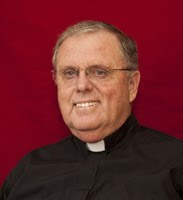 ARIZONA EDITORIAL FORUM
ARIZONA EDITORIAL FORUM
By Fr. Glenn B. Jenks
The setting was a beautiful small white pueblo-style Episcopal Church located 35 miles north of Phoenix. Every morning, a group of Hispanic migrant day workers, numbering between 35 and 65, would gather in the church parking lot before sunrise. They were greeted by several church volunteers who had already set out the coffee and the day-old pastries donated by a couple of local coffee shops.
The Day Worker Ministry of this small church was started in an effort to provide a solution to a difficult situation in the town of Cave Creek.
The town had a problem with literally dozens of migrant workers walking in groups along the roads and streets. The town council was frustrated because, while the migrants were not committing any crimes, their mere presence aroused the ire of local residents. That was when Good Shepherd of the Hills Episcopal Church stepped up and offered itself and its facilities to operate a day worker center, away from the streets and local businesses.
In this way, the Day Worker Program of the Church was born. It operated successfully for almost nine years. It helped workers get medical and dental care. The program weeded out "trouble makers," alcoholics and drug users, so that when someone hired a worker they could have confidence that the person they hired was safe, reliable and honest.
Not surprisingly, over time the church became very controversial. For some, it was perceived as having provided a creative solution to a difficult problem. Others felt that by operating this ministry the church itself had become the problem. The local newspaper called the church and its priest the "bad shepherds," and much worse, for befriending what the paper referred to as these "vermin."
In time, a local motorcycle group began picketing the church on Sunday mornings, shouting obscenities with bull horns, and intimidating parishioners as they came to church. This strained relations among members of the church, some were willing to accept the criticism as the cost of doing the Gospel, and others were bothered by the "bad press" and the controversial image the church had acquired. Some left the church, while others joined because of the program.
Mounting pressures from some who wanted all "illegals" thrown out of town finally succeeded in attracting the attention of the Sheriff of Maricopa County, Joe Arpaio. The Sheriff targeted the church and decided to make an example of it and its ministry. As a participant in the Department of Homeland Security's (DHS) 287(g) program, the Sheriff's department had trained 160 deputies to detain dangerous offenders suspected of being in the country illegally.
Sheriff Arpaio ordered his deputies to park near the entrance of the parking lot and to follow any car with a brown-skinned person in it. They were to pull them over for the slightest infraction. The deputies would stop the car, require the brown skinned person to prove their legal residence, and when they could not they were arrested immediately turned over to Immigration and Customs Enforcement (ICE) which deported those who could not prove citizenship. Eventually, the day worker program shut down for good.
Church Leaders, along with other Valley Interfaith Project Leaders, reacted to the Sheriff's disregard for the guidelines in his 287(g) agreement by challenging DHS and ICE to fulfill their oversight obligations. DHS was provided with evidence showing the Sheriff and his deputies violating terms of the 287(g) agreement.
The experience of Good Shepherd of the Hills Church reveals that there is tension in our communities about immigration. However, enforcement only approaches to immigration that trample on civil and religious rights only exacerbate our problems. What we need is a workable solution that upholds our values and moves us forward together. We need comprehensive immigration reform.
--------------------------------------------------------------------------------
Jenks is a retired rector at Good Shepherd of the Hills Episcopal Church.
--------------------------------------------------------------------------------
Copyright © 2009 by the Arizona Editorial Forum. 9/09
Monday, September 28, 2009
Labels: ARIZONA EDITORIAL FORUM
Subscribe to:
Post Comments (Atom)


0 comments:
Post a Comment